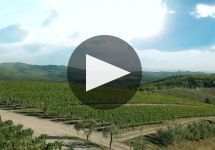Frescobaldi Tenuta Perano Chianti Classico 2020
-
James
Suckling - Decanter
-
Robert
Parker -
Jeb
Dunnuck



Product Details
Your Rating
Somm Note
Winemaker Notes
Professional Ratings
-
James Suckling
Aromas of mixed forest berries and lovely herbal notes, such as anise, licorice and sage. Medium-bodied with a nice balance of fruit, lightly firm yet silky tannin and bright, citrusy acidity. Tight, focused finish with good length.
-
Decanter
Purchased by Frescobaldi in 2017, the Perano estate is in the northern sector of Gaiole with vineyards between 400 and 600 metres. With a hefty percentage of Merlot and Cabernet Sauvignon, the blend is a bit of a throwback for Chianti Classico. Nevertheless, it's a solid wine. The nose is oak-led with roasted coffee and clove atop cherry and black currants. Tinged with mineral and chocolate, the palate is sophisticated, concentrated and tight, intersected by crisp acidity. It has has firm, tactile tannins and the stuffing for ageing over the next seven to eight years.
-
Robert Parker's Wine Advocate
The entry-level Tenuta Perano 2020 Chianti Classico shows a medium-dark appearance and a bouquet that is very true to its territory. This estate is located in a panoramic position in Gaiole in Chianti and has white alberese rock littered throughout. The Frescobaldi family (owners of Tenuta Perano) have done a terrific job at maintaining the freshness of Sangiovese and its varietal tones of cherry, earth and blue flower. In truth, a tiny percentage of complementary grapes (including Merlot, Colorino, Canaiolo and Cabernet Sauvignon) is added into the mix. You do feel the hot vintage in terms of the wine's intensity, but the fruit maturity is well balanced.
-
Jeb Dunnuck
A deep but transparent ruby/magenta, the 2020 Chianti Classico is fruity and primary, with aromas of mixed berries, licorice candy, olive, and wet stones. Medium-bodied and savory, it has plush, ripe tannins, and although it's not pronounced, it retains good freshness and has a clean finish, with a lovely texture throughout. It is a very charming wine, though it has very well-detailed underpinnings with a mineral-tinged finish to enjoy over the next few years. I liked it quite a lot.
Other Vintages
2021-
Wine
Spectator - Decanter
- Vinous
-
James
Suckling -
Wine
Enthusiast -
Wine
Spectator
-
Wine
Spectator
-
James
Suckling -
Robert
Parker -
Wine
Enthusiast
- Decanter
-
James
Suckling -
Wine
Spectator -
Wine
Enthusiast
-
James
Suckling -
Wine
Spectator -
Robert
Parker -
Tasting
Panel

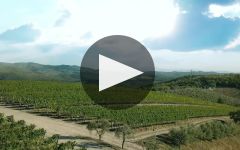
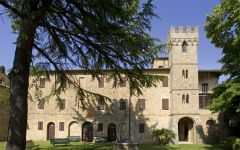
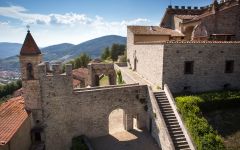
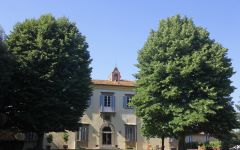
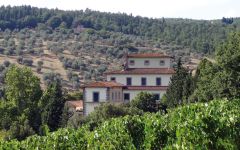
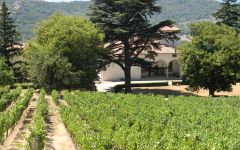

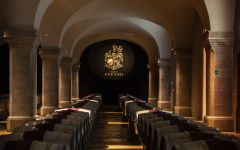

Frescobaldi’s story is strictly connected with the history of Tuscany. At the high point of medieval Florence, the Frescobaldis spread their influence as bankers, becoming patrons of major works in Florence, such as Santa Trinita bridge and the Basilica of Santo Spirito.
Frescobaldi embodies the essence of Tuscany, its extraordinary vocation for viticulture and the diversity of its territories.
Frescobaldi’s uniqueness stems precisely from the representation of Toscana diversity, from its estates and from wines which express a kaleidoscope of aromas and sensations, springing from the characteristics of each individual terroir. The Estates are positioned in prime areas of Tuscany and each tells its own story, made up of nature, terroir and people.
From Tenuta Castiglioni, where the family’s 700 years of wine-growing history began, to CastelGiocondo on the Montalcino hills, to the timeless Castello Nipozzano. From the hidden gem of Castello Pomino, up to Tenuta Ammiraglia’s new horizons overlooking the sea, to Tenuta Perano a natural amphitheater in the heart of Chianti Classico, ending with Remole, that expresses all the character of Tuscany.
Behind every Frescobaldi wine lies the passion of agronomists and oenologists, who know their vineyards and terroirs down to the finest detail. Their art, creating quality wines, requires the iron rule of respect. Respect for tradition, which guide them, even in the midst of innovation or avant-garde solutions. Respect fort Tuscany, the living land, to be cultivated in harmony and serenity. Respect for each individual terroir, borne of a unique combination of soil, altitude and microclimate, each giving us a wine with its own matchless personality.

Among Italy's elite red grape varieties, Sangiovese has the perfect intersection of bright red fruit and savory earthiness and is responsible for the best red wines of Tuscany. While it is best known as the chief component of Chianti, it is also the main grape in Vino Nobile di Montepulciano and reaches the height of its power and intensity in the complex, long-lived Brunello di Montalcino. Somm Secret—Sangiovese doubles under the alias, Nielluccio, on the French island of Corsica where it produces distinctly floral and refreshing reds and rosés.

One of the first wine regions anywhere to be officially recognized and delimited, Chianti Classico is today what was originally defined simply as Chianti. Already identified by the early 18th century as a superior zone, the official name of Chianti was proclaimed upon the area surrounding the townships of Castellina, Radda and Gaiole, just north of Siena, by Cosimo III, Grand Duke of Tuscany in an official decree in 1716.
However, by the 1930s the Italian government had appended this historic zone with additonal land in order to capitalize on the Chianti name. It wasn’t until 1996 that Chianti Classico became autonomous once again when the government granted a separate DOCG (Denominazione di Origine Controllata e Garantita) to its borders. Ever since, Chianti Classico considers itself no longer a subzone of Chianti.
Many Classicos are today made of 100% Sangiovese but can include up to 20% of other approved varieties grown within the Classico borders. The best Classicos will have a bright acidity, supple tannins and be full-bodied with plenty of ripe fruit (plums, black cherry, blackberry). Also common among the best Classicos are expressive notes of cedar, dried herbs, fennel, balsamic or tobacco.
